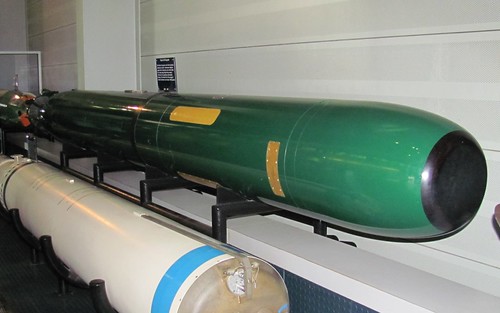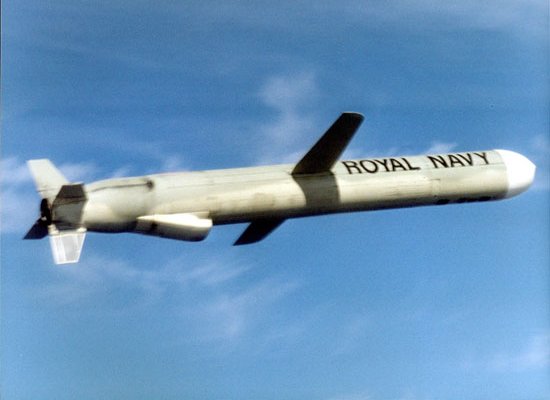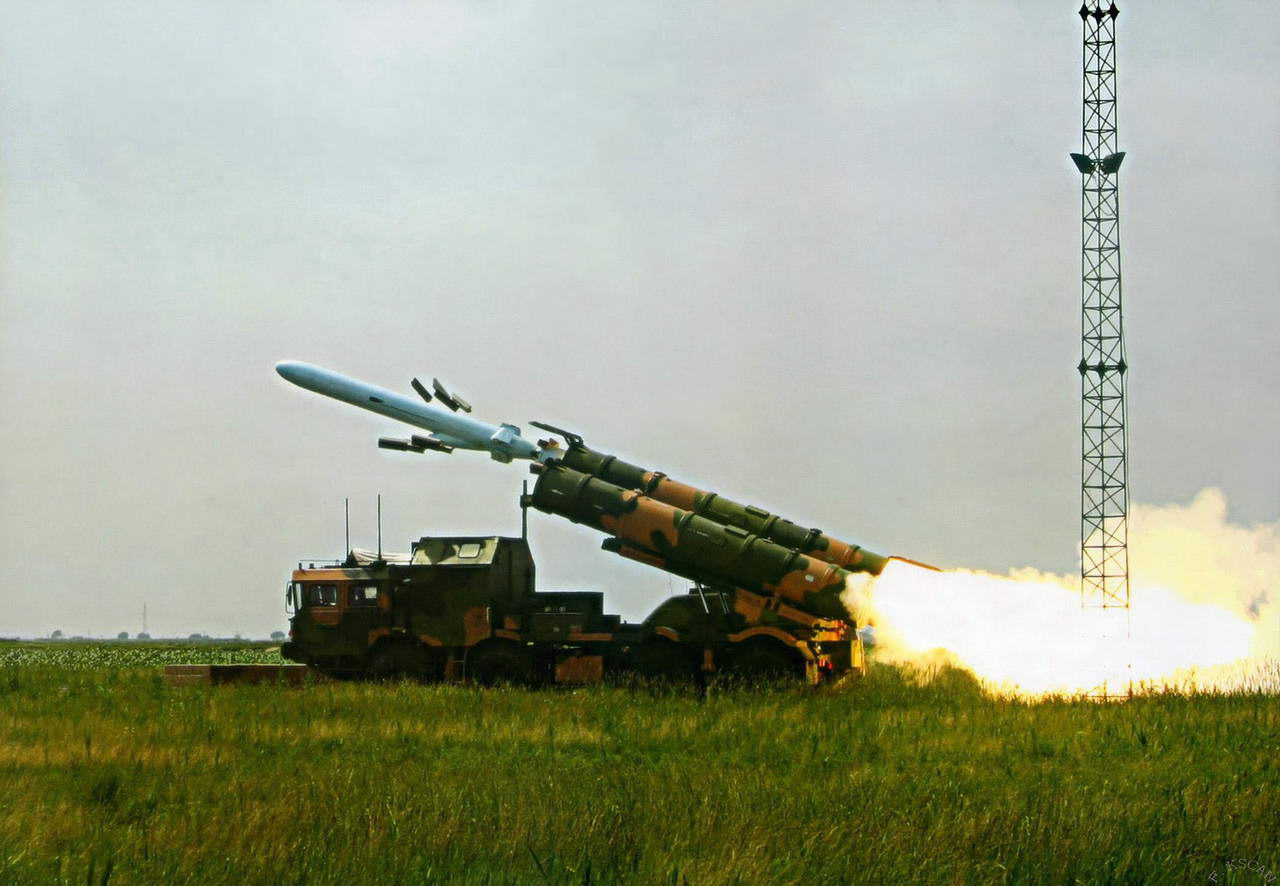The Mark 48 and its improved ADCAP (Advanced Capability) variant are heavyweight submarine-launched torpedoes. They were designed to sink fast, deep-diving nuclear-powered submarines and high-performance surface ships.

The Mark 48 and its improved ADCAP (Advanced Capability) variant are heavyweight submarine-launched torpedoes. They were designed to sink fast, deep-diving nuclear-powered submarines and high-performance surface ships.

A cruise missile is a guided missile that carries an explosive payload and is propelled, usually by a jet engine, towards a land-based or sea-based target. Cruise missiles are designed to deliver a large warhead over long distances with high accuracy. Modern cruise missiles can travel at supersonic or high subsonic speeds, are self-navigating, and can fly on a non-ballistic, extremely low altitude trajectory. They are distinct from unmanned aerial vehicles (UAV) in that they are used only as weapons and not for reconnaissance. In a cruise missile, the warhead is integrated into the vehicle and the vehicle is always sacrificed in the mission.
Cruise missile designs fundamentally derive from the German V-1 of World War II. Advances in transistor and computer technology allowed self-correcting avionic and aeronautical designs that allowed missiles to be guided in flight, as opposed to only at launch. These advances developed into guided missiles and guided bombs, and later into the modern cruise missile.
In 2011, it was estimated that a single cruise missile costs £500,000 (US$830,000).
Images of Cruise Missiles





Anti-ship missiles are guided missiles that are designed for use against ships and large boats. Most anti-ship missiles are of the sea-skimming type, many use a combination of inertial guidance and radar homing. A good number of other anti-ship missiles use infrared homing to follow the heat that is emitted by a ship; it is also possible for anti-ship missiles to be guided by radio command all the way.
The first anti-ship missiles, which were developed and built by Nazi Germany, used radio command guidance, these saw some success in the Mediterranean Theater in 1943 - 44, sinking or heavily damaging at least 31 ships with the Henschel Hs 293 and more than seven with the Fritz X, such as the Italian battleship Roma or the cruiser USS Savannah. A variant of the HS 293 had a TV transmitter on board. The bomber carrying it could then fly outside the range of naval AA guns and use TV guidance to lead the missile to its target by radio control.
Many anti-ship missiles can be launched from a variety of weapons systems including surface warships (they can then be referred to as ship-to-ship missiles), submarines, bombers, fighter planes, patrol planes, helicopters, shore batteries, land vehicles, and conceivably, even by infantrymen firing shoulder-launched missiles.
A typical acronym for the phrase "anti-ship missile" is ASM, but AShM can also be used to avoid confusion with air-to-surface missiles, anti-submarine missiles, and anti-satellite missiles.



 Please leave your valuable comments on my posts. Thanks
Please leave your valuable comments on my posts. Thanks
The M1 Abrams is a third-generation battle tank produced in the United States. It is named after General Creighton Abrams, former Army Chief of Staff and Commander of US military forces in Vietnam from 1968 to 1972. The M1 is a well armed, heavily armored, and highly mobile tank designed for modern armored ground warfare. Notable features of the tank include the use of a powerful gas turbine engine (fueled with JP8 jet fuel), the adoption of sophisticated composite armor, and separate ammunition storage in a blow-out compartment for crew safety. With a weight of close to 68 short tons (almost 62 metric tons), it is one of the heaviest main battle tanks currently in use.
Three main versions of the M1 Abrams have been deployed, the M1, M1A1, and M1A2, incorporating improved armament, protection and electronics. These improvements, as well as periodic upgrades to older tanks have allowed this long-serving vehicle to remain in front-line service. The M1A3 is currently under development.
The M1 Abrams entered U.S. service in 1980, replacing the M60 tank. It served for over a decade alongside the improved M60A3, which had entered service in 1978. The M1 remains the principal main battle tank of the United States Army and Marine Corps, and the armies of Egypt, Kuwait, Saudi Arabia, Australia, and in 2010 Iraq.











The FGM-172 SRAW (Short-Range Assault Weapon), also known as the Predator SRAW, is a lightweight, close range missile system produced by Lockheed Martin, developed by Lockheed Martin and Israel Military Industries. It is designed to complement the Javelin anti-tank missile. The Predator has a longer range and is more powerful than the AT4 that it is designed to replace, but has a shorter range than the Javelin.

